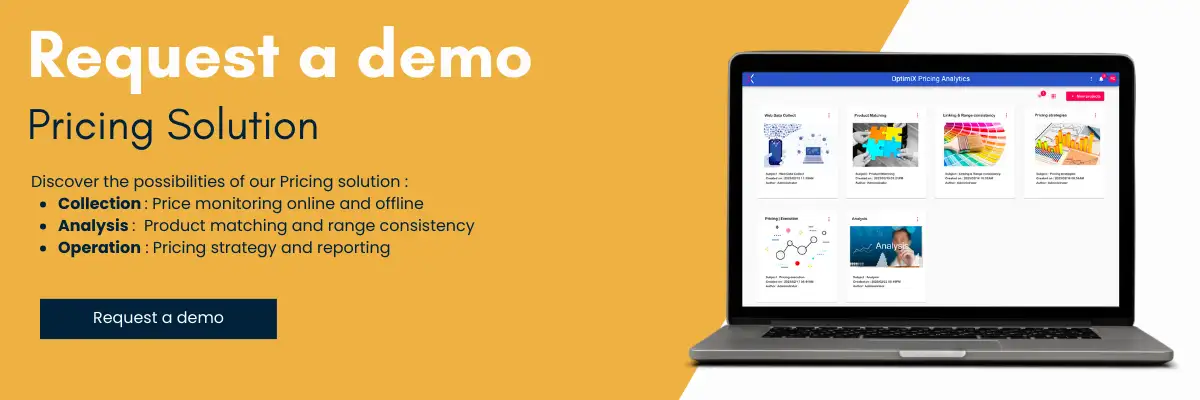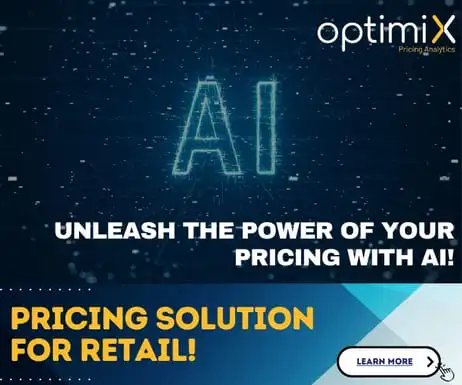Difficulties keep coming in retail and deep uncertainties are emerging: a series of crises and unprecedented situations, inflation, market saturation, new competition (pure web players, marketplaces, etc.).
In this somewhat complicated context, decision-makers must constantly be able to adapt, find new answers, new sources of operational efficiency and growth. Above all, they must do it more and more quickly to keep pace with the transformations affecting retail.
In this race to gain competitiveness and profitability, it is tempting to seek answers from technology. For their part, solution publishers play their role. They promise increased efficiency, informed decision-making facilitated by data, rapid ROI, etc.
These promises are real, but technology alone is not enough. Significantly and sustainably improving your performance levels is not just a question of tools. It’s first and foremost a question of strategy.
It is the way in which you put software solutions at the service of your strategy that determines the success of your projects. Without a clear strategy, you find yourself in a situation of imbalance, comparable to moving forward on an uncertain path.
In this article, we explain how to combine strategy and technology to improve your performance.
Strategy: A true compass for your SaaS project
Technology without strategy = failure
The SaaS solutions market has already experienced sustained growth for several years (+ 10% in 2022). Today, it is still developing in two main directions: artificial intelligence and niche sectors. In the medium term, the number of players on the market is therefore expected to increase considerably.
So, for each sector (even niche), for each profession and for each problem, its solution?
We might be tempted to think so. However, behind the incredible figures for the B2B SaaS market, we must keep in mind that Many projects fail for one obvious reason: a lack of alignment between strategy and technology.
Technology can’t do everything. The tools are the armed arm of a well-thought-out strategy, oriented towards clear, precise, measurable objectives. Strategy is the fundamental element that underlies every decision and action.
Without a clearly defined strategy, SaaS projects risk lacking direction and getting lost in a sea of technology options.
The foundations of strategy
Strategy is the backbone on which any SaaS project initiative is based. It allows, in order:
- Set goals
- Detect blocking points that prevent objectives from being achieved
- Define the path and means to implement to achieve the objectives
Firstly, the strategy therefore consists of setting a course. It is part of the continuity of the business objectives set by the management of the brand, in terms of turnover for example.
Then, each business unit is assigned its own objectives. For example, for logistics services, we can have a dual objective of optimizing product availability while reducing logistics costs. For the teams in charge of pricing, a possible objective is to maximize margins. Performance indicators (KPIs) are associated with each objective to evaluate progress.
Once the course is defined, we move from strategy to tactics. Which sheet of paper will we draw up to achieve the objectives? This is the how of strategy.
To do this, we must identify priorities, identify and remove blocking points. It will be necessary to optimize and streamline certain processes, then allocate resources accordingly. This is where software solutions come in, to help with decision-making or improve operational efficiency.

Long-term strategy and vision
Strategy guides technology decisions. In fact, she transcends trends and fads.
Since it sets a course, it constitutes a safeguard against hasty decisions, taken in an emergency or in simple reaction to an event or movement of the competition.
The strategy offers an overarching vision. It reconciles the short and long term interests of the company.
In choosing a solution, for example, strategy is important. It is entirely possible that a tool could respond to the brand’s short-term challenges. But what will happen if, in a few months, we have to change course? Is the solution agile and scalable enough to adapt to a new situation?
The necessary alignment between the choice of a solution and your strategic objectives
With the digitalization of processes, many publishers are developing solutions to help retailers make better decisions and improve their operational efficiency. These “best of breed” solutions are specifically designed to respond to business issues encountered by teams.
However, when choosing a solution, you must carefully assess to what extent it meets your strategic objectives.. Before committing, it is urgent to ask yourself the right questions:
- Does the solution really address the business issues we want to solve?
- Are its functionalities adapted to our strategic objectives?
- Is it aligned with our positioning and business objectives?
- Does it lead to a better customer experience and/or a better employee experience?
- Are we sure that adoption by business teams will be optimal?
- Does it correspond to our current needs but also, will it be able to adapt to my future needs?
- What are the risks, in terms of data security, for example?
Through this non-exhaustive list of questions, you can clearly see that the success of a SaaS project requires an in-depth analysis of the issues, processes and user experience. Only by closely aligning solution choice with these strategic elements can SaaS projects realize their full potential and deliver lasting value.

Strategy-technology complementarity, a key success factor
In SaaS projects, success relies on the synergy between strategy and technology. This complementarity allows companies to take full advantage of the advantages offered by the solutions by integrating them coherently into their overall strategic plan.
Flexibility and agility
SaaS solutions provide essential flexibility and agility to quickly adjust strategies based on market developments.
In a rapidly changing environment, adaptability is essential. Today, some brands change their prices several times a month. In sectors where we only changed prices twice a year, we now change them at least once a quarter to better adapt to demand, the weather and integrate different influence criteria.
Therefore, the operational burden increases. And teams need to equip themselves to change gear while avoiding mistakes. Technological solutions respond perfectly to this challenge. They automate the operational part of the process. But decision-makers keep control of the strategy. They are always the ones who decide on the alignment rules or who choose to opt for a unified or differentiated pricing strategy.
From a more long-term perspective, companies are also required to review their strategy more regularly. The rules you established at one time may become obsolete months or years later.
Can your solution respond quickly to a larger or smaller change in strategy?
Here again, this question determines the choice of tool. You will naturally gravitate towards solutions that offer regular updates and scalable features. You can therefore be certain that they will always be in line with market developments and your future needs.
Automation and optimization
Technology has positive effects on strategy. When it is part of the continuity of the strategy, it also contributes to creating a virtuous circle.
Not only do SaaS solutions facilitate the operational implementation of the chosen strategy, but they also free up time for teams to concentrate on tasks with higher added value.. And in particular, on strategic thinking.
Let’s imagine a team of pricers who must manually manage price calculations. Most of employees’ time is devoted to operational tasks. With a pricing solution, they no longer have to calculate prices. They can reallocate this time to checking prices but also to strategic reflections on the rules or criteria to take into account.
The provision of the technological solution therefore results in an increase in strategy for your teams. It is a facilitator for moving towards finer, better adjusted strategies and better performance.

Precision and granularity in execution
SaaS tools can be tailored to meet the specific strategic needs of businesses.
In most cases, publishers can configure the solution to adapt to customer use cases. They thus offer a lot of precision and granularity in the execution of strategies.
This is all the more true as many publishers also offer human support to help their clients:
- Take charge of the solution
- Optimize their use of the tool
- Improve their level of performance
In a context marked by strong uncertainties, adaptability has become the key word for decision-makers in retail. Brands must constantly adapt to new situations. The strategy sets a course, but you must also be able to change it quickly if necessary.
Under these conditions, we must be able to quickly realign operational processes with new strategic directions. Technology meets these scalability needs.
The synergy between strategy and technology is becoming an imperative for companies wishing to maintain their competitiveness and profitability.
Also, choosing a SaaS solution is not just about opting for the most innovative or popular technology, but about selecting the one that best meets the company’s specific needs and long-term vision.
The choice of a technology is therefore based not only on functional issues but also strategic and human issues. In addition to choosing an efficient and adaptable solution, human factors must also be taken into account and facilitate the adoption of new tools by operational teams.
A SaaS project therefore has many ramifications. If you only approach it from a technology perspective, the risk of failure is high. In your discussions with publishers, remember to integrate all the key success factors.


